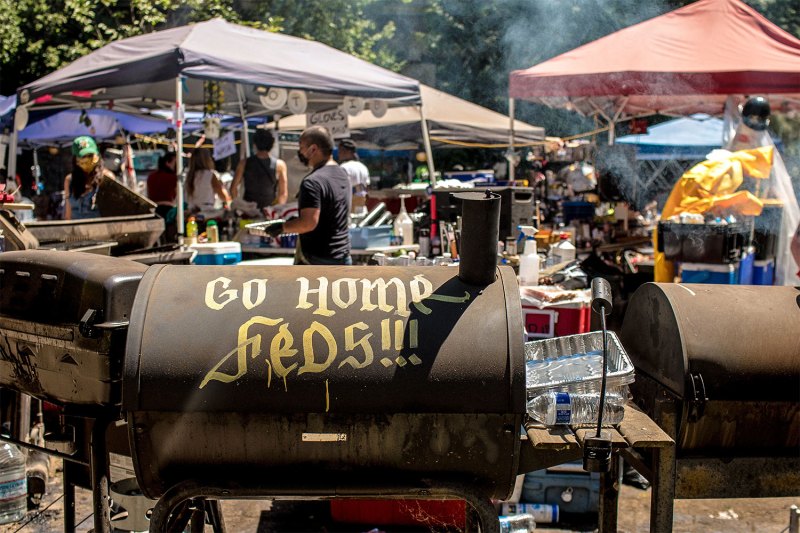For more than two months straight, Americans have been demonstrating in the name of social justice in cities all across the country. Sparked by the murder of George Floyd, the Black Lives Matter movement has drawn thousands to the Portland federal courthouse for nightly gatherings.
By and large, these gatherings have been peaceful. I know this not because I’ve read it from trusted sources (which I have) or heard it from friends and family members who have been protesting on the streets (check that box, too). I know this because I live in Portland and have been out firsthand.
But never mind the police state we’re living in or a desperate president sending in federal troops to militarize my hometown — a city that deserves better. We’re here to talk about the incredible humans who keep this whole thing afloat, ensuring that people flexing their First Amendment rights are properly cared for and can continue assembling on behalf of the Black community.
Riot Ribs was one of those efforts. The volunteer-led endeavor was essentially a pop-up food cart, offering free barbecue, water, and more to members of the movement. With area businesses closed due to the pandemic or fear of demonstrations (or a heightened police presence), an impromptu kitchen like this became all the more important. And the police seem to know as much, having tried and failed several times to stymie Riot Ribs.

In a matter of a single month, Riot Ribs rose to prominence, raised hundreds of thousands of dollars, and disbanded. July proved to be a rollercoaster ride for the organization and one not many predicted. Throughout its brief existence, Riot Ribs was very active on social media, attracting an impressive legion of Twitter followers. It was hailed not only by scores of Portlanders but politicians. Recently, Congressman Earl Blumenauer voiced his support for Riot Ribs, offering a significant financial contribution and urging others to follow suit.
Riot Ribs was born on the Fourth of July. It began as a one-man operation and quickly swelled into a fixture. It served up ribs, kebobs, hot dogs, and other goods, along with water, to protesters during all hours. This is important to note as tension seems to build by the cover of night near the federal building in downtown Portland. Protesters gotta eat.
As OPB reports, Riot Ribs volunteers were targeted by authorities. They’ve been arrested, had their equipment seized, and have even been shot with “less-lethal” weapons. But every time they get knocked down, the city seems to lift the whole thing up, offering donations, new grills, and tons of social media support.
On July 25, it was reported that the organization would hand over power to Don’t Shoot PDX. It’s a worthy fellow social justice organization and the move mimics what other popular sub-movements — the Wall of Moms, for example — have done. As soon as you grab some of the spotlight, the idea is to return it back to the main character in this whole thing: Black Lives Matter. It’s an important way to decenter whiteness in the middle of a racial justice movement.
Everybody is a bit more suspicious around Portland these days, especially since unwanted federal agents showed up in late June. These nameless figures operate under a much broader set of rules than, say, the local police department does. It’s a big reason why things have escalated here. That said, some think Riot Ribs was pushed out while others believe they were tired of threats and worried about their well-being. Other outlets reported infighting relating to the significant amount of money coming in and how it should be put to use.
In fact, it appears Riot Ribs simply exploded in popularity and now there’s a bigger need, beyond just Portland. The organization says it’s attracted some $300,000 in donations and, with the new power structure, will create mobile units that will visit other cities across the country. If it does in fact persevere and continue to feed demonstrators, it’s a glimmer of food-based good news amid what’s felt like endless turmoil.
*The Manual reached out to Riot Ribs for comment on July 24th but was informed that the organization was too booked with requests to offer any information.


